Buildner, in partnership with ARCHHIVE Books, would like to present a preview article from an upcoming print publication “What is Affordable Housing”? This time we would like to introduce you to a Norwegian designer who addresses NYC’s unused vertical spaces.
The Coalition for the Homeless, a NYC-based advocacy and service organization, estimated in March that over 63,000 men, women, and children now sleep in the New York City municipal shelter system each night. Thousands more sleep on the streets, in the subways, and in other public spaces.
Norwegian designer Andreas Tjeldflaat was riding the subway when he met a man who spoke of his difficulties with the NYC shelter system. Tjeldflaat described the man as “victimized by the city’s brutal housing market conditions,” having chosen to remain on the streets rather than deal with the shelter conditions. Tjeldflaat was compelled to address the problem and explained: “As an architectural designer, it felt important to me to use my expertise to explore ways to alleviate the situation.”

Illustration by Framlab. Mural artwork depicted by Viktor Miller-Gausa.
Tjeldflaat founded Framlab, an Oslo- and New York City-based creative agency, to explore the intersection of product design and architecture. ‘Homed’ is the name given to a proposal by Framlab seeking to capitalize on the exterior windowless walls found on buildings around NYC. The prefabricated system combines a framework of scaffolding with vertical circulation and densely packed hexagonal housing modules.
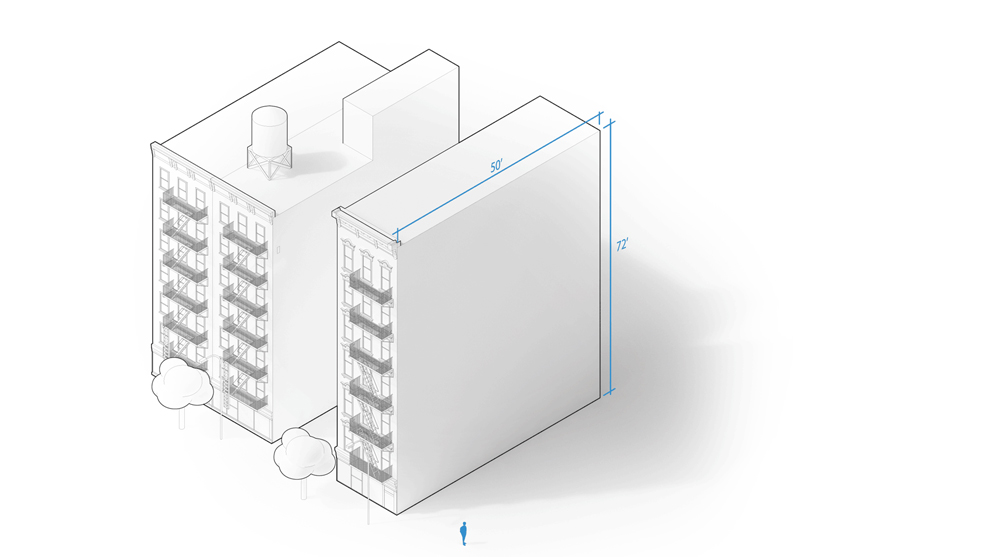
Homed Animation. Animation by Framlab.
The Homed unit is designed to provide year-round housing that can withstand the winter weather and provide a cool space in the summer. The proposed 3D printed-modules are integrated with furniture, storage, lighting and appliances, and have an exterior skin composed of oxidized aluminum cladding.
If there is a spectrum linking product design and architecture, Homed falls somewhere in the middle. It responds to environmental conditions, structural requirements, and NYC zoning regulations, and is conceived to support residential program. It also capitalizes on a set of product design tools, as a prefabricated unit with a kit of parts, addressing design objectives through combination and interchangeability rather than customization. The system’s integrated flexibility could permit cost-effective assembly that is modifiable. It could also be disassembled and relocated.

Homed Aerial Drawing. Illustration by Framlab.
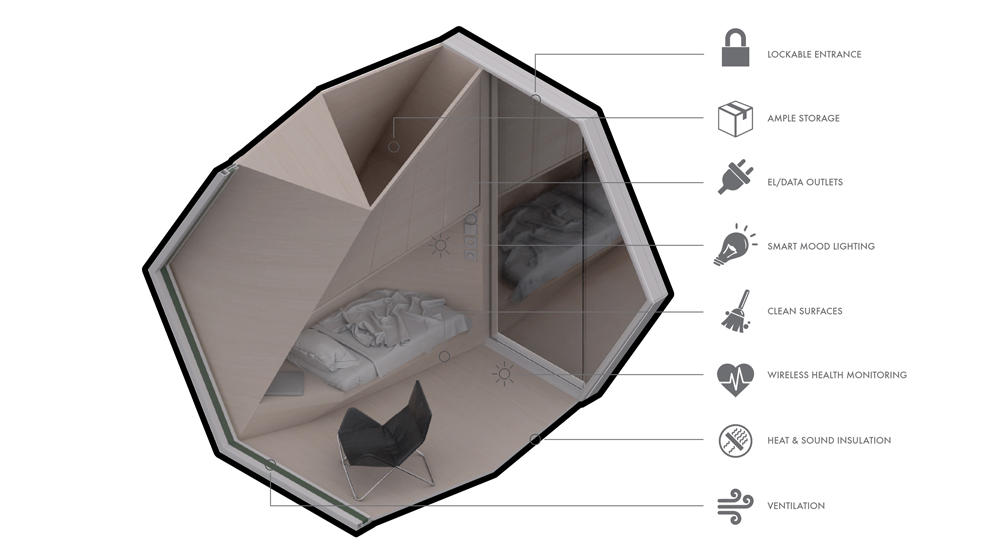

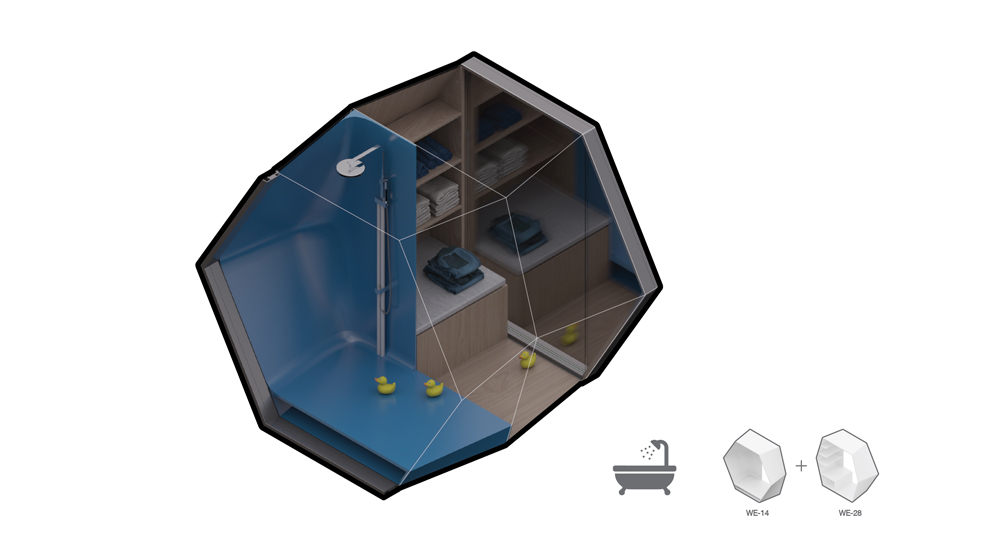
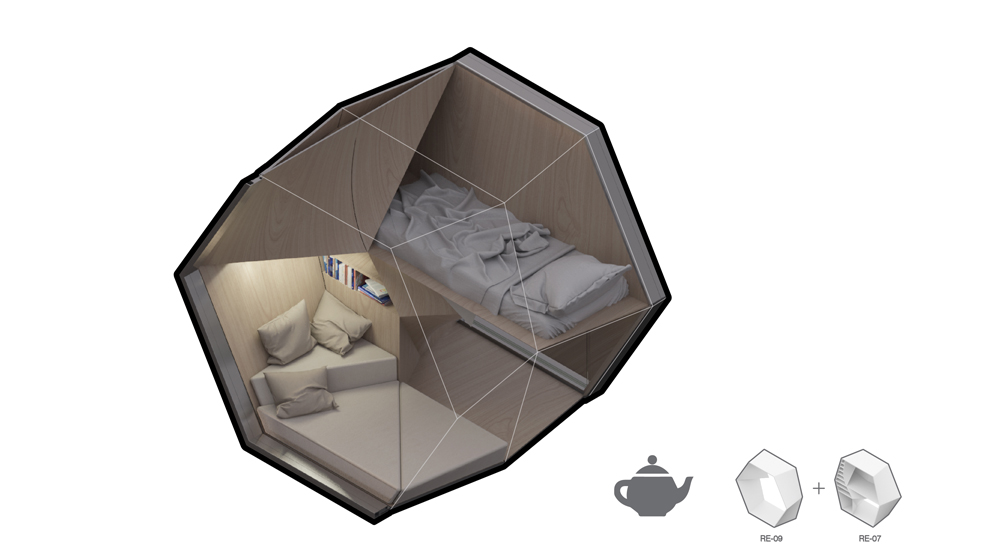
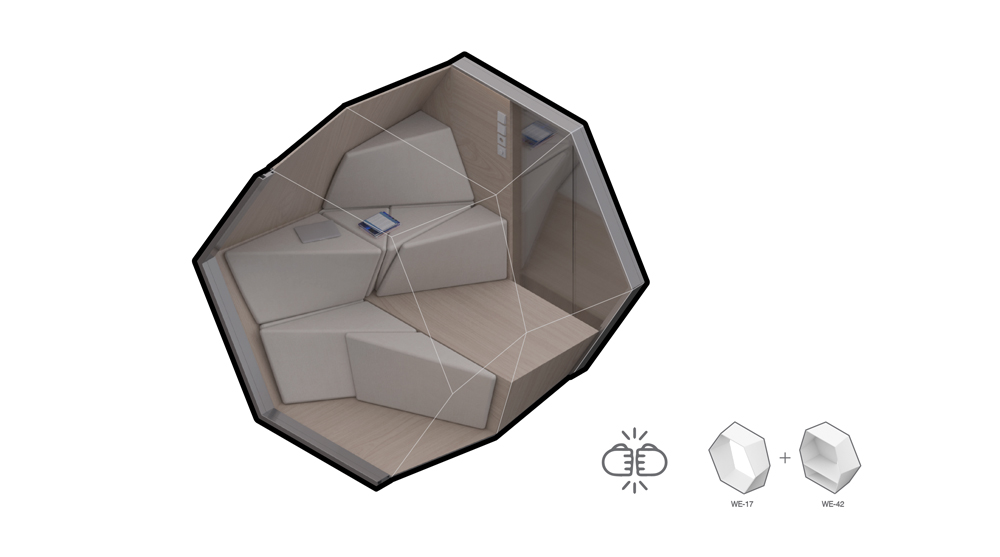
Homed Diagram Series. Illustrations by Framlab.
Framlab’s project is currently in schematic design. While Tjeldflaat has focused on unused NYC spaces as the testbed for Homed, he believes the experiment could be applied to other cities. “Further development is being mobilized. The production and testing of a full-scale prototype is the next project milestone,” he told us.
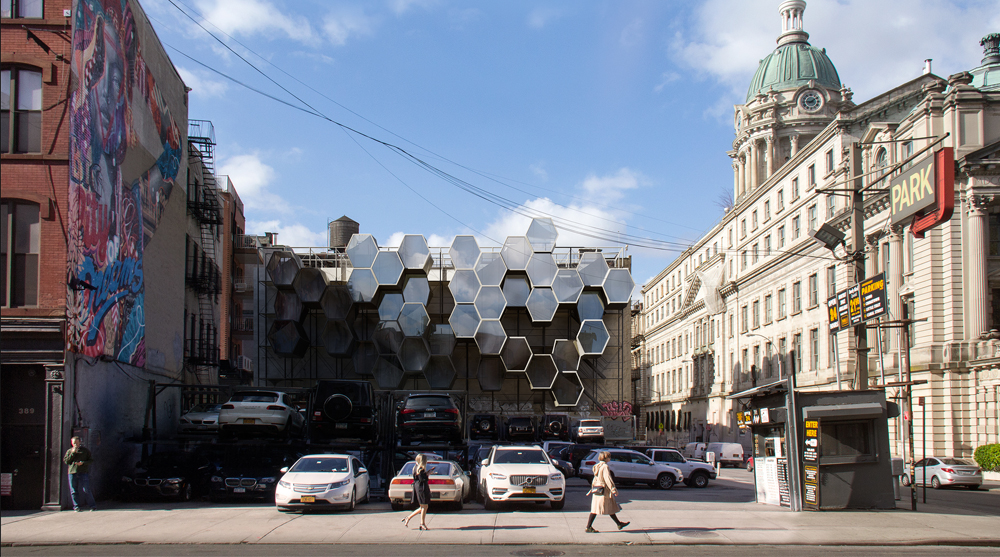
Exterior Render. Illustration by Framlab.
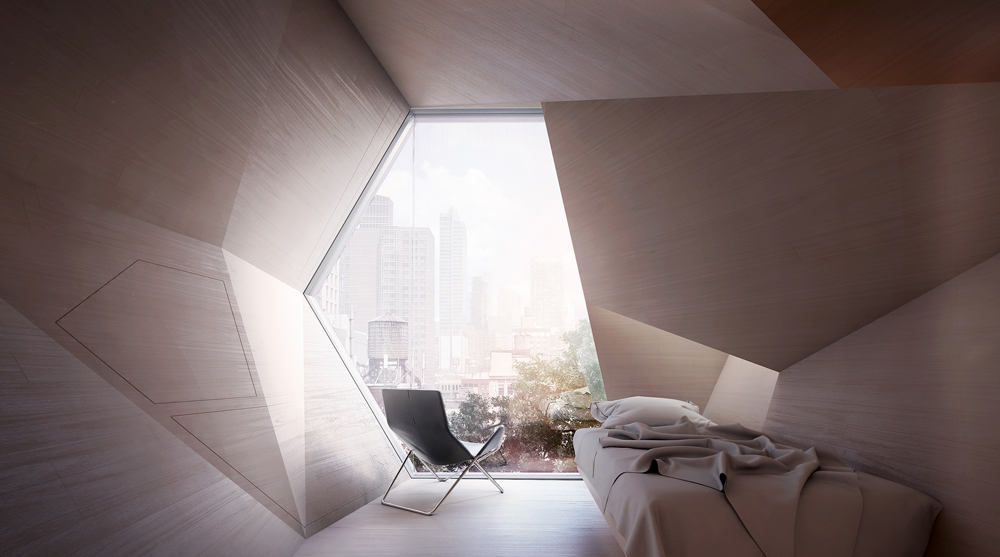
Interior Render. Illustration by Framlab.
Homed has garnered media attention with coverage by the World Economic Forum, Architectural Digest, and Business Insider. When asked if he was surprised about the project’s positive reception, Tjeldflaat said: “I believe this is because it is an optimistic proposal that addresses a pressing societal issue in an innovative way.” ●

Framlab Logo, framlab.com (twitter @framlabdesign)
Framlab is an innovation studio based in Oslo and New York City. The studio was founded by Andreas Tjeldflaat to explore the intersection of urbanism, product design, and architecture.
ARCHHIVE BOOKS
ARCHHIVE is an annual print publication expanding on the ideas presented in Buildner’ online architectural design competitions. Buildner is a generator of new ideas, conceived by a worldwide think tank, for tackling challenging design issues. It often works with civic, industry, or government partners to initiate its competitions, some of which are conceptual while others are intended to be built.
Each issue of ARCHHIVE will bring together architects with startups, entrepreneurs, developers, and problem-solving organizations which tackle these same global issues, often in ways other than building. ARCHHIVE merges the wealth of Buildner’ novel architectural design proposals, with complementary ideas in entrepreneurship, policy, and technology.
Top 3 Reasons Why You Should Enter Architecture Competitions
Curious about the value of architecture competitions? Discover the transformative power they can have on your career - from igniting creativity and turning designs into reality, to gaining international recognition.
Learn more


























